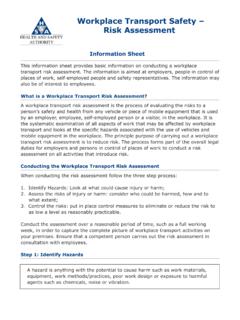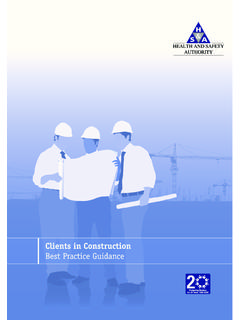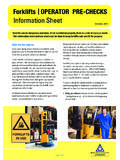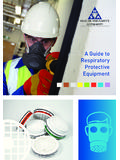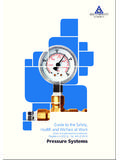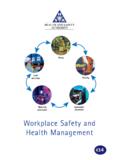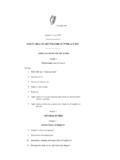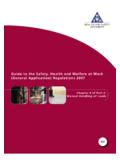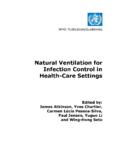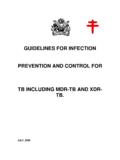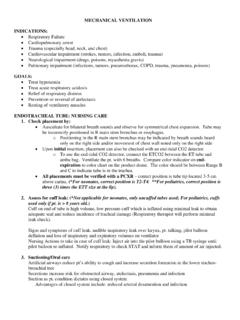Transcription of COMPOSTING - Health and Safety Authority
1 Information SheetOverviewComposting is a natural biological process of decomposing organic waste material. Under the rightconditions, the micro-organisms naturally present in the organic waste multiply and metabolise theorganic matter, turning it into compost. Some of these micro-organisms are pathogenic and suitablecontrols must be put in place to prevent employee exposure. In Ireland, there are large industrialscale COMPOSTING facilities which process 1000 to 50,000 tonnes of waste. COMPOSTING October 2014 Biological HazardsThe aerobic process of waste COMPOSTING leads to heatgeneration and by controlling the temperature of thewaste most of the pathogenic ( Health threat) organismsare destroyed although the growth of certain bacterialand fungal species can occur.
2 Any handling/tossing/turning/lifting of compostingmaterials may generate aerosols (suspension of fineparticles in air) of these micro-organisms, which arereferred to as bio-aerosols. Workers on COMPOSTING sites may therefore be at riskof exposure to bio-aerosols depending on their worktask, their proximity to the bio-aerosol source and thecontrol measures put in of the microorganisms found in the dustgenerated during the process are known respiratorysensitisers which may cause asthma or similar lung-related HazardsAs well as the biological exposure there is also a risk ofchemical exposure as the waste decomposes. Thegeneration of chemical agents depends on the natureof the COMPOSTING and the organic materials beingcomposted.
3 Ammonia, methane, carbon dioxide andhydrogen sulphide are four possible off-gasses thatmay be generated. Ammoniais a colourless alkaline gas with a pungentdistinctive odour. It can irritate or burn the eyes, skinand respiratory system and this irritation may varydepending on the individual,the concentration ofammonia and the durationof exposure. Methaneis an odourless,highly flammable gas whichis not toxic but by replacingair will act as a 1 of 4 Carbon dioxideis an odourless gas which is nottoxic but by replacing air will also act as a asphyxiant gasses are odourless andtherefore their presence may not beobvious.
4 In confined spaces or areas, withpoor or no ventilation, an asphyxiant candisplace oxygen and exposure in suchcircumstances can be very serious to sulphideis a colourless, verypoisonous(CLP classification - Acute tox 2, fatal ifinhaled), flammable gas with the characteristic foulodour of rotten eggs. It often results from thebacterial breakdown of organic matter in anaerobicconditions. As the concentration of Hydrogensulphide increases it incapacitates theolfactory nerve (nose) and its odour nolonger becomes detectable. The serioushazard may, in such circumstances, may are used in some COMPOSTING site toremove odours/ammonia from the air.
5 Thesescrubbers use corrosive materials in their operation( sulphuric or hydrochloric acid). Contact withthese corrosive materials can be highly further information on safe use of chemicals andhazardous substances see the HSA website under theheading Chemicals( ). There are anumber of fact sheets and guidance documents onchemicals available on the site under COMPOSTING operations are conducted indoorsfor environmental reasons. As a result, bio-aerosolsand chemical aerosols may be contained andconcentrated within the workplace ventilation is the materials decompose and heat is generatedthe workplace atmosphere can become very humidity can effect respiration and dampclothing can increase skin contact with ventilation eliminates high Hazards Manual handling Vehicle injuries/collisions Injuries including cuts from sharps, , being struckby objects.
6 Slips and trips floors are often wet and slippery Vehicle and machinery noise Poor lighting/visibility Routes of Exposure & Exposure LevelsThe main risks of exposure are by skin contact andinhalation. High humid conditions in some indoorplants may increase the dermal contact Exposure LimitsOccupational limits for bio-aerosolshave notbeen developed. As during the COMPOSTING process,heat produced by microbial activity kills plant andanimal pathogens, environmental monitoring focuseson the species such as actinomycetes (spore formingbacterial species) and fungal species such asAspergillus Fumigatus. ORGANIC WASTE COMPOSTING Information SheetPage 2 of 4 ORGANIC WASTE COMPOSTING Information SheetHealth EffectsSome of the species can cause allergic (or asthma like)respiratory disease such Farmer s Lung disease,Mushroom Worker s Lung disease, allergic rhinitisand occupational asthma, following excessiveexposure.
7 In addition, the thermotolerant fungusAspergillus Fumigatus. is recognised as anopportunistic respiratory pathogen forimmunocompromised sludge may contain enteric pathogens; theyare generally transmitted by the oral route and maylead to enteric infection. Where sewage sludge is acomponent in the COMPOSTING process, the nature andconcentrations of pathogens in sewage will dependon the Health and the size of the population in thecatchment. Recommended Control Measures Employees are at greatest risk of exposure tobioaerosols during handling of compost , work processes should aim to reduceexposures during shredding, turning, moving and anyprocess step where an aerosol can be controlssuch as containment,isolation, local exhaust ventilation, ventilation pressuredifferentials may be provided to prevent handling/moving COMPOSTING materialsshould have.
8 Sealed cabs with air conditioning supply Air filtration systems which include pre-filters to protect the HEPA filter, Pressure gauges to indicate the status of the air filtering system Alarms when filters block Positive pressure within cab (>10 Pa) to prevent dust ingress. Vents to relieve excess pressure Self-closing, sealed doors. Check that the clean air is turned on and working. Check any air conditioning self-test every time you start the vehicle. Keep doors and windows closed. If this is not possible, use RPE for moving vehicle driver will have to leave their cab onoccasion. The driver must then wear suitable 3 of 4 Occupational limits for chemical substancesChemical SubstanceAmmoniaCarbon dioxideHydrogen sulphideMethaneEINECS (8-hourreference period)OELV (15 minreference period)See 2011 Code of Practice for the Safety , Health and Welfare at Work (Chemical Agents) Regulations,2001 for a fuller explanation of WASTE COMPOSTING Information SheetAdministrative controlscontrols such as hygienemeasures such as personnel washing facilities andregular site cleaning should be in place.
9 Properhygiene measures are necessary to preventcontamination by ingestion or inhalation. Thenumber of employees who have potential to beexposed should be kept to a minimum. Access to thecomposting area should be controlled. If employeesare likely to work in confined spaces, thenprocedures in line with HSA s Guidance on ConfinedSpaces should be put in PPE should be supplied in compliance with theSafety, Health and Welfare at Work (GeneralApplications) Regulations, coveralls, gloves, boots should be be worn where adequate control cannotbe achieved by other means. As a minimum, a FFP2respirator must be worn in the work Advice Health surveillance should be offered to employeesat COMPOSTING sites.
10 Several of the biological agentslikely to be present are allergens and appropriatesurveillance under an occupational healthcareprofessional should be points During the COMPOSTING process, heat produced is controlled to sanitise the organic matter, and under the right conditions kills plant and animal pathogens. Heat generation encourages the growth of thermophilic species such as actinomycetes (sporeforming bacterial species) and in some cases thermotolerant fungal species such as Aspergillus fumigatus. Sludge, if a constituent raw material, may contain enteric pathogens. Chemical Agents where present may be corrosive, very poisonous or simple asphyxiants.
